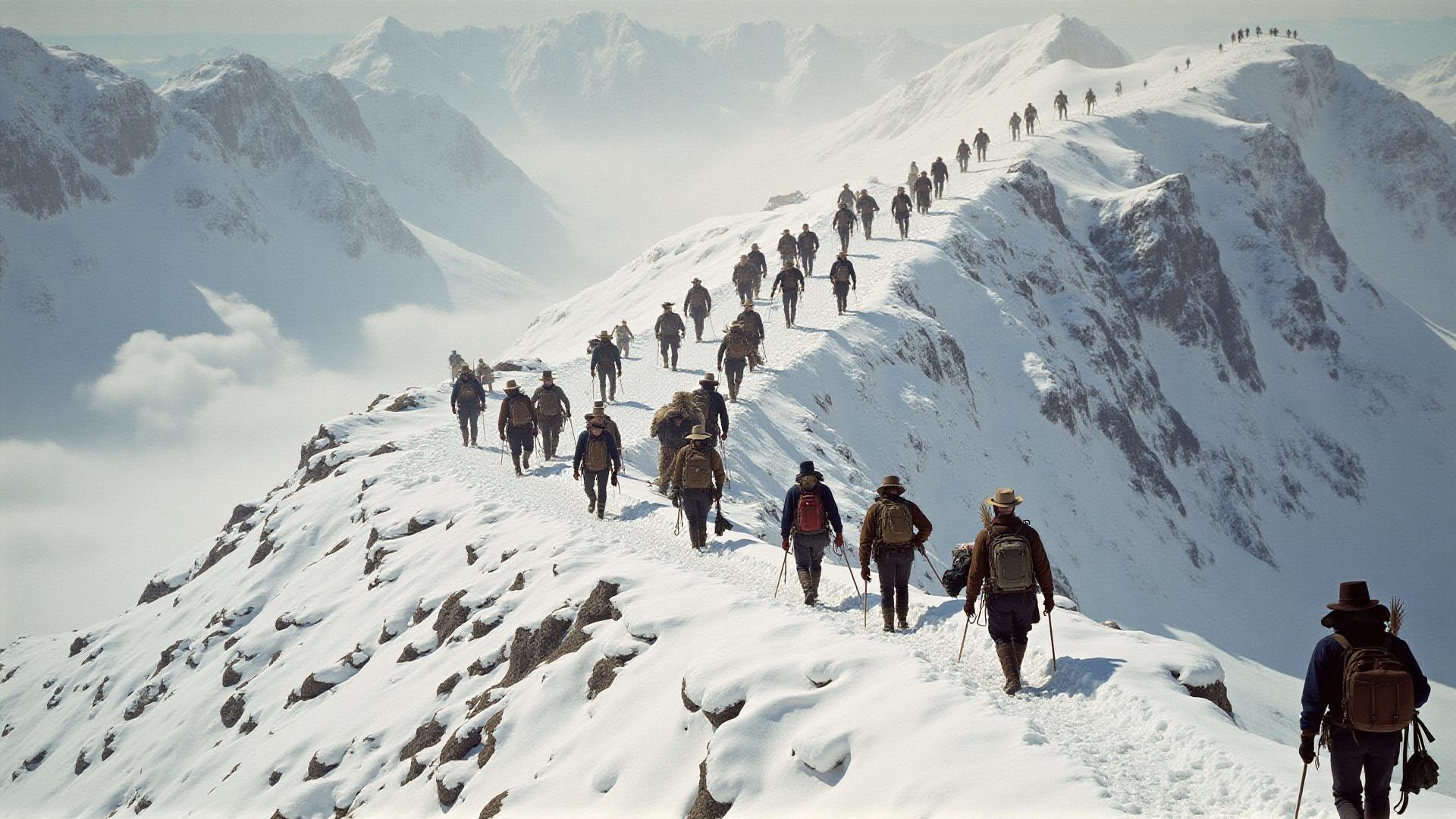Getting to the Klondike goldfields was often more challenging than the mining itself. Thousands faced brutal conditions, impossible logistics, and mortal danger on their journey north.
The Main Routes
Most stampeders approached via southeast Alaska, disembarking at Skagway or Dyea and using one of two mountain passes:
Chilkoot Trail
- Steeper and shorter route
- Required climbing "Golden Stairs" - 1,500 steps carved in ice
- Brutal climbs but faster
- Started from Dyea
White Pass Trail
- Gentler slopes but longer
- Muddy and treacherous
- Nicknamed "Dead Horse Trail"
- Started from Skagway
After passing over the mountains, they aimed for Bennett Lake, then built or boarded rivercraft for the Yukon River → Klondike route. Some Canadians opted for all-Canadian overland routes (via British Columbia or Alberta), but these were rarer, more remote, and often more punishing.
Massive Load, Fierce Conditions
Canadian authorities mandated that each prospector bring a year's supply of food (approximately 1,150 lb or ~520 kg) to avoid starvation. That included not just food, but tools, clothing, fuel, and other essentials—pushing many loads to nearly a ton.
Because the trails were so steep and rough, loads were divided into ~65-lb packs. Travelers often had to shuttle goods up and down trails in stages, making the journey up the pass 20-30 times. This meant that a trail officially 33 miles long could require traveling 500 miles when accounting for all the back-and-forth.
Required Supplies (1 Year)
- 400 lbs of flour
- 200 lbs of bacon
- 100 lbs of beans
- 100 lbs of sugar
- Plus: dried fruits, evaporated vegetables, coffee, tea, salt, and more
- Tools: picks, shovels, gold pans, cooking gear
- Clothing: heavy winter gear, boots, blankets
Mule and horse losses were significant—White Pass was particularly deadly, earning its grim nickname as up to 3,000 animals perished on the trail. The terrain—ice, snow, mud, and narrow mountain passes—combined with cold, avalanches, and exhaustion, claimed many lives.
Logistical, Health & Human Costs
Rivers froze in winter (hindering travel), and spring floods or "breakup" could be perilous. Supplies had to be maintained in precarious conditions; food spoilage, scurvy, injuries, and exposure were common.
Many died or turned back before reaching the goldfields. The exact death toll is unknown, but estimates suggest hundreds perished on the trails. Some resorted to trading their goods, working as laborers, or abandoning their dreams altogether. For every person who reached the goldfields, several more turned back defeated.
